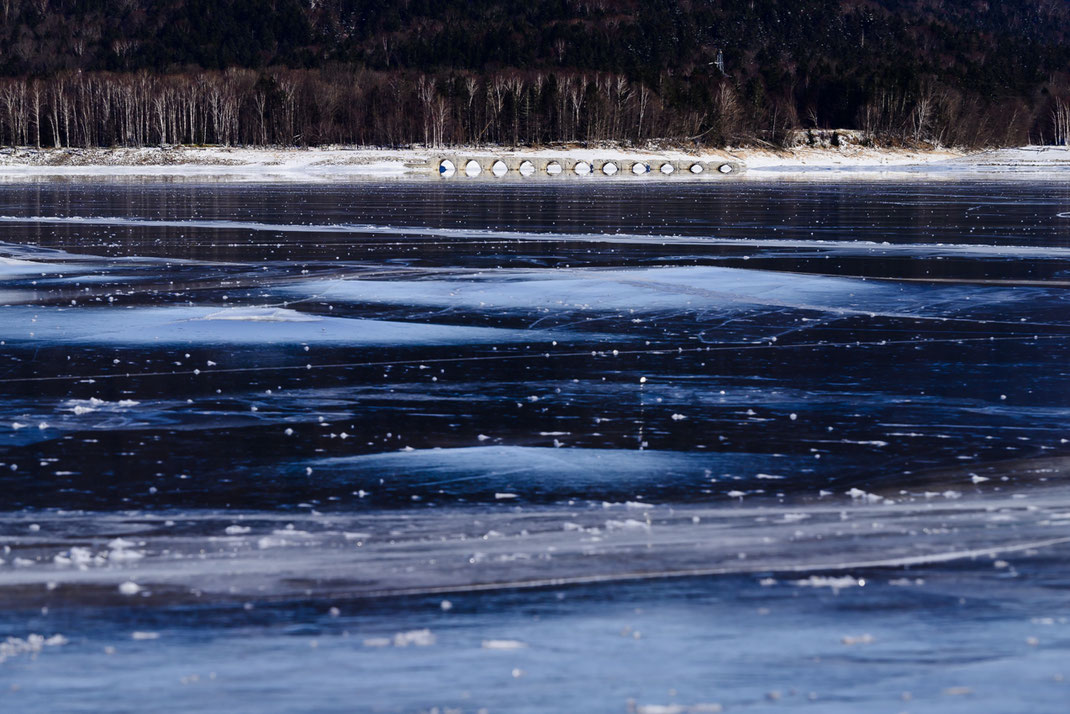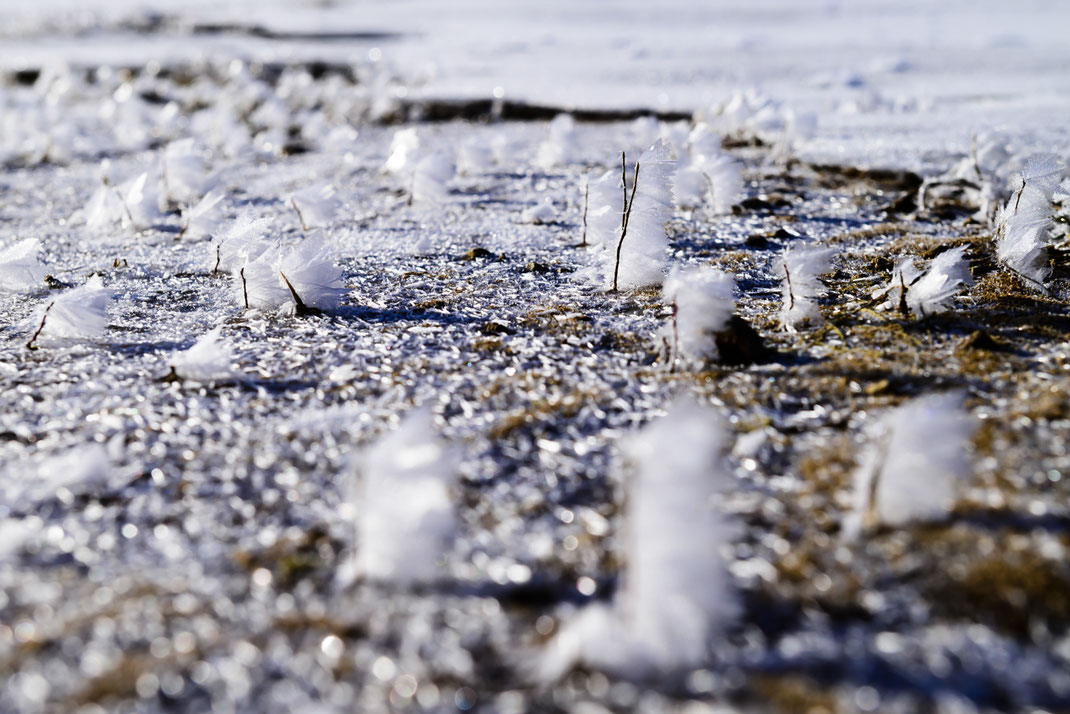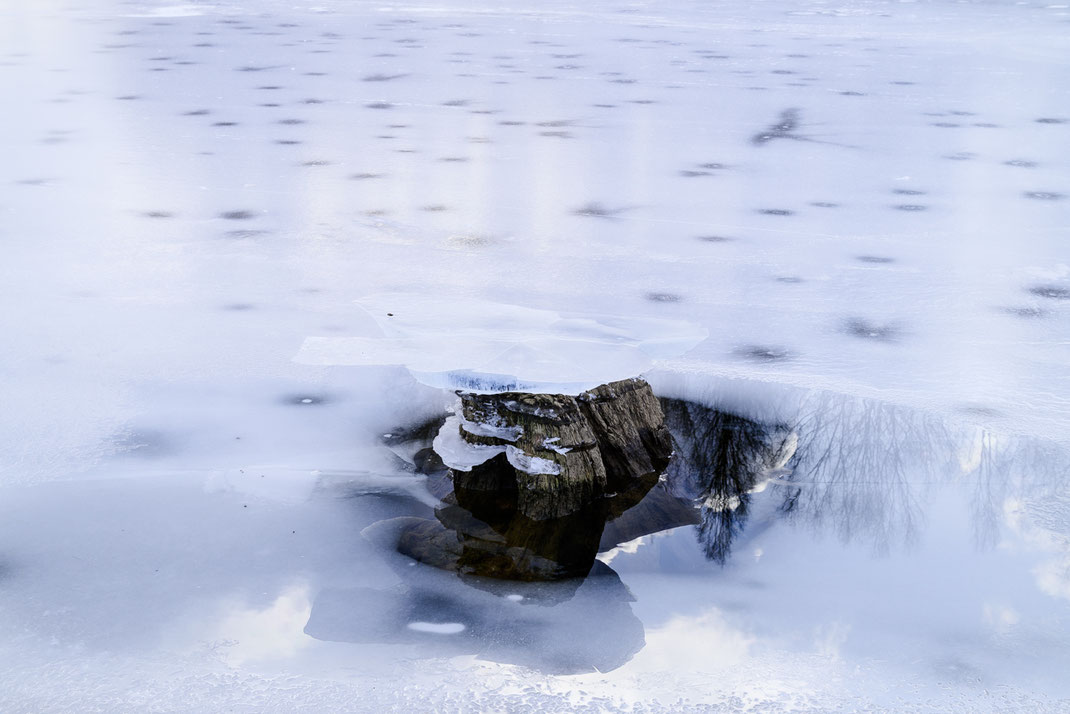Over the past week, with the intensifying chill of the mornings and evenings, Nukabira Lake in Hokkaido has completely frozen over. This year, the freeze came a bit earlier than last, possibly due to the low water levels preventing the submersion of the Taushubetsu River Bridge, a historic and revered structure in the region.
This bridge, no longer in use, stands as a poignant reminder of the past, beautifully juxtaposed against the stark winter landscape. Its unique character is enhanced in winter, especially when framed by the natural ice art that forms in the area.
Before the snow blankets everything, the cold mornings see the lake adorned with frost flowers. These delicate ice structures, formed when water vapor freezes in frigid air, create an ethereal and transient beauty, stretching across the frozen surface like a winter garden.
Beneath your feet, if you venture onto the ice, you'll find ice bubbles trapped within. These are formed by gases released by decomposing plants on the lake bed, captured as if in time, creating a fascinating scene under the clear ice.
Every winter, I find myself captivated by these natural sculptures. They are a stark reminder of nature's ability to craft beauty in the most unexpected ways, turning the frozen lake into a gallery of fleeting, crystalline art.
As the season progresses, these scenes will be covered by snow, but for now, they offer a glimpse into the magical, often overlooked artistry of winter in Hokkaido.
朝晩の冷え込みが強まったこの一週間ほどで糠平湖が一気に全面結氷しました。
タウシュベツ川橋梁が水没しないほどの低水位の影響もあってか、昨年よりも少し早めの凍結になりました。

雪が積もるまでのわずかな期間、冷え込んだ朝の湖上には水蒸気が凍りついたフロストフラワーが広がり、足元の氷の中にはアイスバブルが見られます。不自然なほどによくできた自然の造形に、毎冬目を奪われるばかりです。



